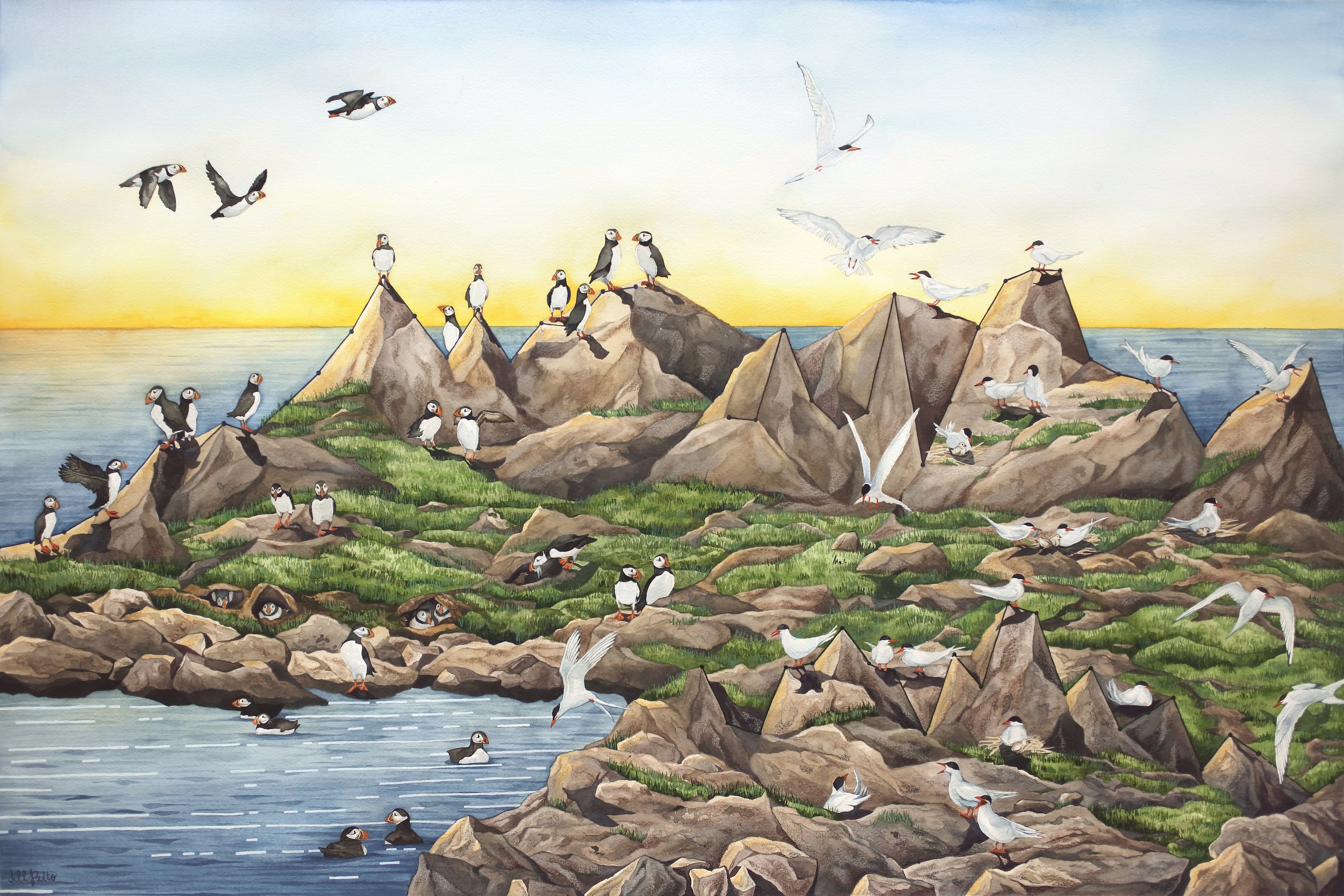Seabirds of Seal Island
Watercolor and Colored Pencil, 24” x 36”, 2022
This piece was done for the visitor center of the Friends of Maine Coastal Islands National Wildlife Refuge in Rockland, Maine. It is on permanent display in the center’s gallery.
The coast of Maine is dotted with rocky islands whose isolation lends themself to numerous species of seabirds. Researchers at the Maine Coastal Islands National Wildlife Refuge (NWR) have studied and managed these birds for decades. The focus of this painting is Seal Island, off the coast of Rockland. Restoration of seabirds began here in 1984, and this piece highlights three of the species: Atlantic Puffins, Arctic Terns, and Common Terns.
Three line graphs show pairs of these birds from 1999-2022. Over this time period, Puffins, whose graph is on the left side of the piece, had began to recover, but in more recent years, chicks are struggling to survive the nesting season. Several big factors are rising water temperatures and availability of food due to overfishing in the Gulf of Maine. Arctic Terns, whose graph is in the bottom right, has also been declining, with a variable population over the last two decades. One reason for this is climate change in Antarctica, where they winter for five months. The third species, Common Tern, whose graph is in the top right of the artwork, are a more successful story. On Seal Island their population was higher a decade ago, but their population in the state has increased over the last 30 years from just over 2,000 birds, to almost 11,000. It is critical to have islands such as this one set aside as part of the NWR, because human disturbance continues to greatly threaten seabirds.
This story is also shown through a set of dashed white lines where puffins are swimming: these represent periods of anomaly in sea surface temperature (SST) from 2007-2021. Each dash represents a time when the SST was 1-4°C warmer than average. This data is from the Gulf of Maine Research Institute. In Seabirds of Seal Island, a story is shared about exactly how these species are doing, and reveals how imperative it is that we research, manage, and restore seabird populations as best as we can.
Data from: https://mainecoastislands.org
